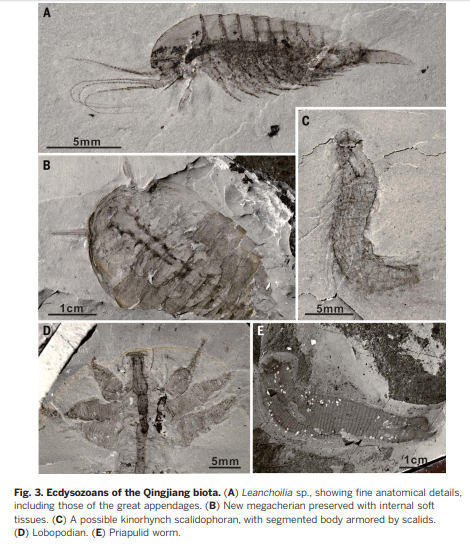The Qingjiang biota—A Burgess Shale–type fossil Lagerstätte from the early Cambrian of South China
Science 363 (6433), 1338-1342.
DOI: 10.1126/science.aau8800
http://sci-hub.tw/10.1126/science.aau8800
http://science.sciencemag.org/content/sci/suppl/2019/03/20/363.6433.1338.DC1/aau8800_Fu_SM.pdf
Dongjing Fu1, Guanghui Tong1, Tao Dai1, Wei Liu1, Yuning Yang2, Yuan Zhang1,Linhao Cui1, Luoyang Li1, Hao Yun1, Yu Wu1, Ao Sun1, Cong Liu1, Wenrui Pei1, Robert R. Gaines3, Xingliang Zhang1
Abstract:
Burgess Shale–type fossil Lagerstätten provide the best evidence for deciphering the biotic patterns and magnitude of the Cambrian explosion. Here, we report a Lagerstätte from South China, the Qingjiang biota (~518 million years old), which is dominated by soft-bodied taxa from a distal shelf setting.
The Qingjiang biota is distinguished by pristine carbonaceous preservation of labile organic features, a very high proportion of new taxa (~53%), and preliminary taxonomic diversity that suggests it could rival the Chengjiang and Burgess Shale biotas.
Defining aspects of the Qingjiang biota include a high abundance of cnidarians, including both medusoid and polypoid forms; new taxa resembling extant kinorhynchs; and abundant larval or juvenile forms.
This distinctive composition holds promise for providing insights into the evolution of Cambrian ecosystems across environmental gradients.
————————————————————————————————————
Some fossils:



